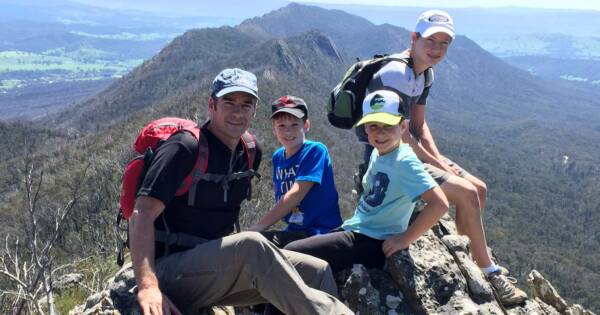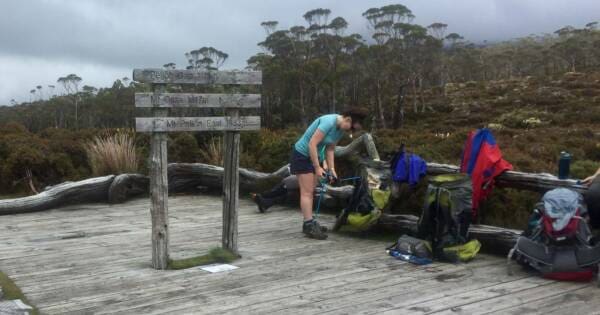Condensation is a common problem in hiking tents, especially in cold or humid conditions. It occurs when warm, moist air inside the tent comes into contact with the cooler walls and ceiling of the tent. This causes the moisture in the air to condense into water droplets.
Condensation can be a annoying, but it can also be a problem if it gets too bad. It can make your sleeping bag wet, damage your gear, and even make you sick. There are a number of things you can do to manage condensation in your hiking tent, both before and during your trip:
Before your hike
Choose the right tent. Some tents are better designed to handle condensation than others. Look for a tent with good ventilation, a rainfly that extends all the way to the ground, and a vestibule where you can store wet gear without bringing it into the tent.
Pack the right gear. Avoid bringing unnecessary items into your tent, as this will add to the humidity. If you do need to bring wet gear inside the tent, put it in a waterproof stuff sack.
Treat your tent with a seam sealer. This will help to prevent water from leaking through the seams of your tent and contributing to condensation.
Choosing a campsite

Avoid camping in low-lying areas, near water, or in dense bush. These areas are more likely to be humid and trap condensation. Instead, try to camp on higher ground in a well-ventilated area.
If possible, pitch your tent in the shade of a tree. This will help to keep the inside of your tent cooler and reduce condensation.
Pitching your tent

You should keep the flysheet off the inner tent whenever possible. This will help to create a gap between the two layers, which will allow for air circulation and help to prevent condensation. If the flysheet is touching the inner tent, the moisture from the inside of the tent will condense on the underside of the flysheet and drip back down into the tent. This can make your sleeping bag and gear wet and uncomfortable.
Pitch your tent tautly and make sure that the rainfly is fully extended. This will help to create a gap between the rainfly and the inner tent, which will allow for air circulation. You may also need to adjust the guy ropes in damp conditions to maintain tension.
Open all of the vents on your tent, including the ground vents. This will allow moist air to escape and prevent it from condensing on the walls and ceiling of your tent.
If you are camping in windy conditions, you may want to allow the flysheet to touch the inner tent slightly to help prevent the tent from being blown away. However, you should still try to create a small gap between the two layers. Here’s some tips for keeping the flysheet off the inner tent:
- Pitch your tent tautly.
- Make sure that the rainfly is fully extended.
- Adjust the guy ropes in damp conditions to maintain tension.
- If you are camping in windy conditions, allow the flysheet to touch the inner tent slightly.
- Use a tent footprint or groundsheet to create a barrier between the ground and the bottom of your tent.
- Pitch your tent on a raised platform.
Creating airflow

Creating more airflow in your hiking tent is one of the most effective ways to manage condensation. Here are a few tips:
- Open all of the vents on your tent. This includes the vents on the rainfly, the inner tent, and the ground vents. If your tent has multiple vents, open them all to create a cross-breeze.
- Position your tent so that the door is facing into the wind. This will help to draw fresh air into the tent and push out moist air.
- Prop up the vestibule door to create more airflow. This is especially helpful if you are cooking inside your tent.
- You can also use a small battery-operated fan to circulate air inside the tent.
- If you are camping in cold weather, you may want to open the vents slightly to allow some airflow, but be careful not to let too much cold air into the tent.
- Use a tent footprint. A tent footprint will help to create a barrier between the ground and the bottom of your tent. This will help to prevent moisture from seeping into the tent and contributing to condensation.
- Pitch your tent on a raised platform. This will help to keep the bottom of your tent dry and reduce condensation.
- Use a groundsheet. A groundsheet is a waterproof sheet that you can place inside your tent to protect the floor from moisture.
During your trip

If you are base camping, or staying multiple nights in one spot, keep the door of your tent open during the day to allow fresh air to circulate. You can also prop up the vestibule door to create more airflow.
Use a sleeping pad that insulates you from the ground. This will help to prevent your body heat from condensing on the walls of the tent.
If you are sleeping in a cold environment, use a sleeping bag liner to help keep your sleeping bag dry.
Wipe down the walls and ceiling of your tent with a towel or cloth each morning to remove any condensation that has formed overnight.
Here’s a few extra tips:
- Hang a towel or cloth over the top of your sleeping bag to absorb moisture from your breath.
- Use a bivy sack to cover your sleeping bag. A bivy sack is a waterproof bag that will help to protect your sleeping bag from condensation and other moisture.
Keeping the flysheet dry
It’s a good idea to dry the flysheet as much as possible before packing up your hiking tent. This will help to prevent mold and mildew from growing on the fabric and damage your tent. If you are camping in wet conditions, you may not be able to completely dry the flysheet before packing up. However, you should do your best to remove as much moisture as possible.
Here are a few tips for drying the flysheet:
- If the flysheet is wet, open all of the vents on your tent and let it air out for as long as possible.
- You can also use a towel or cloth to wipe down the flysheet and remove any excess moisture.
- If you must pack up your tent while the flysheet is still wet, try to store it in a dry place and pack it loosely. I actually carry a mesh bag so I can hang my wet fly on the outside of my pack. This allows the water to escape (provided its not raining while I’m hiking)
- If you have a chance, hang the flysheet up to dry in the sun before you depart or as soon as you arrive at the next campsite.
- If the fly is wet when you arrive at the next campsite, set up the tent and open up all the vents and doors to give the fly as much time as you can to dry.
- If you are camping in very wet conditions, you may want to consider using a tarp instead of a flysheet. Tarps are typically made of a more durable fabric and are easier to dry.
- If you are storing your tent for a long period of time, you should clean and dry it thoroughly before putting it away.
Wrapping it up

Managing condensation in hiking tents is crucial for maintaining a comfortable and safe camping experience, particularly in cold or humid conditions. Condensation not only poses inconveniences such as wet gear and discomfort but can also lead to potential health risks. Through careful preparation and strategic camping practices, you can effectively minimise the impact of condensation.
Before embarking on a hiking trip, selecting a well-ventilated tent, packing appropriate gear, and treating the tent with a seam sealer can significantly reduce the likelihood of condensation build-up. Choosing an optimal campsite and ensuring proper tent pitching are essential steps to create an environment that encourages airflow and discourages excessive moisture accumulation.
During the trip, using various techniques such as opening vents, using a tent footprint or groundsheet, and creating more airflow can help manage condensation. Simple measures like wiping down tent walls, using a sleeping pad for insulation, and employing a bivy sack can further aid in preventing condensation-related issues. Additionally, drying the flysheet thoroughly before packing and using a tarp in exceptionally wet conditions can contribute to the overall preservation of the tent’s integrity. By taking proactive measures, you can mitigate the risks associated with condensation and ensure a more enjoyable and comfortable outdoor experience.





